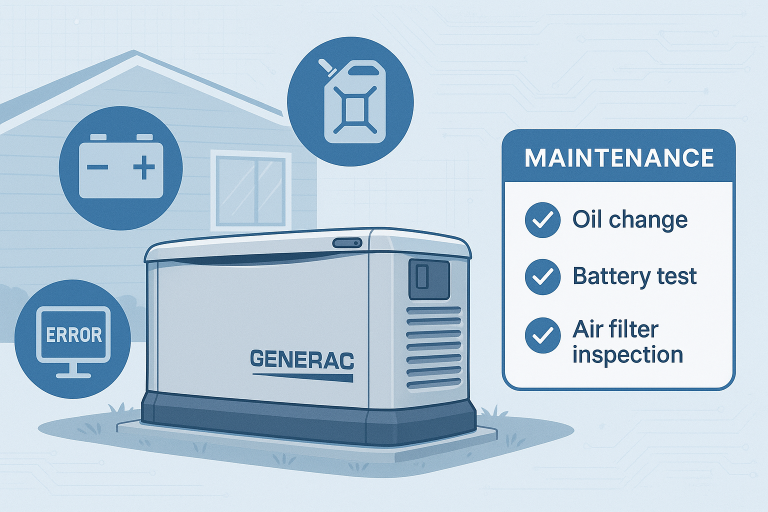Dual Fuel Tank Setup Guide for Generators: Pros and Cons
In a world where energy security is becoming increasingly vital, dual fuel generators offer a flexible and practical solution for power generation. These generators are equipped to run on two different fuel sources—typically gasoline and propane (LP gas) or natural gas—allowing users to switch based on availability, cost, or environmental needs.
Whether you’re powering a home during a blackout, running tools at a remote construction site, or camping off-grid, a dual fuel generator can provide reliable electricity when and where you need it. However, setting one up isn’t just plug-and-play—it requires thoughtful planning, attention to detail, and a solid understanding of how the system works.
In this guide, we explore how dual fuel tank systems work, break down their advantages and disadvantages, and share expert tips for optimizing your setup.
Understanding the Dual Fuel Tank Setup
A dual fuel generator combines two fuel systems into one engine. While the generator doesn’t burn both fuels simultaneously, it allows seamless switching between the two sources depending on the situation.
Common Fuel Combinations:
- Gasoline + Propane (LPG): Gasoline delivers higher power output but has a shorter shelf life. Propane, on the other hand, burns cleaner and can be stored indefinitely.
- Natural Gas + Propane: Natural gas is ideal for stationary home generators connected to pipelines, though power output may be lower than propane.
Key System Components:
- Fuel Tanks: Independent tanks for each fuel type (e.g., 5-gallon jerry cans for gasoline and 20-lb or 100-lb propane cylinders).
- Fuel Selector Valve: A critical component that switches the fuel source without cross-contamination.
- Fuel Lines and Connectors: Must be pressure-rated and designed to handle different fuel types safely.
- Ventilation Systems: Especially important for gasoline setups to prevent fire hazards due to fume buildup.
- Regulators: Control pressure in propane/natural gas lines to protect the carburetor and engine.
Installation Tips:
- Always have your system calibrated by a professional to ensure proper fuel-to-air mixture.
- Follow local codes, especially regarding propane storage and ventilation.
- Secure fuel tanks on level surfaces away from direct sunlight and ignition sources.
Pros of a Dual Fuel Tank Setup
1. Versatile Fuel Options
Switching between gasoline and propane (or natural gas) gives you control. Use propane when gasoline is scarce or expensive, or vice versa.
Example: During hurricane evacuations, propane is often more available than gasoline.
2. Improved Emergency Readiness
Propane stores indefinitely and doesn’t degrade like gasoline. This makes it an ideal backup fuel for long-term emergency preparedness.
3. Lower Emissions & Noise
Propane burns cleaner than gasoline, reducing greenhouse gas emissions and engine carbon buildup. It also runs quieter—up to 12 decibels less in some models.
4. Potential Cost Savings
While propane is less energy-dense, it’s often cheaper and less volatile in price. Also, it doesn’t clog engines over time like stale gasoline can.
5. Longer Runtime
Larger propane tanks (e.g., 100 lb) can provide over 20 hours of continuous runtime on mid-sized generators, compared to 8–12 hours on gasoline.
Cons of a Dual Fuel Tank Setup
1. Higher Upfront Costs
Dual fuel models typically cost 10–30% more than single-fuel equivalents due to more complex carburetion and safety components.
2. Increased Maintenance
Two fuel systems mean double the parts to inspect and maintain. Gasoline lines, in particular, are prone to clogging and require regular cleaning.
3. Lower Output on Natural Gas
Generators running on natural gas often produce 10–20% less wattage than when using gasoline or propane—important for high-load applications.
4. Space and Storage Considerations
Storing two fuels requires planning. Gasoline needs flammable-liquid storage protocols; propane tanks must be kept outside in ventilated areas.
5. Steeper Learning Curve
Users must understand how to safely switch fuels and adjust settings. Mistakes—like switching while running—can damage the engine.
| Feature | Gasoline | Propane (LPG) | Natural Gas |
|---|---|---|---|
| Energy Output | High | Moderate | Lower |
| Shelf Life | 3–6 months (with stabilizer) | Indefinite | Unlimited (if piped) |
| Emissions | Higher | Lower | Lowest |
| Availability | Widely available | Rural-friendly, some urban | Only where piped |
| Storage Needs | Flammable liquid storage | Ventilated outdoor space | Fixed supply (no tanks) |
| Runtime per Tank | 8–12 hours (5-gal) | 20+ hours (100 lb tank) | Continuous |
Who Should Use Dual Fuel Generators?
- Homeowners in Disaster Zones: Those prone to power outages due to hurricanes, floods, or wildfires benefit most from having fuel options.
- Remote Workers and Off-Grid Campers: Propane’s portability and long shelf life make it ideal for life on the road or off the beaten path.
- Small Businesses and Event Planners: Generators used at events, food trucks, or remote job sites can take advantage of propane’s clean, quiet operation.
- Sustainability-Focused Users: Propane burns cleaner and produces fewer carbon deposits, aligning with eco-friendly practices.
Optimization Tips for a Dual Fuel Setup
To ensure your generator runs smoothly and safely on both fuels:
- Invest in Quality Parts: Use UL-listed regulators, brass fittings, and reinforced fuel hoses to prevent leaks and wear.
- Test Both Fuels Regularly: Run your generator on both fuels at least once per quarter to keep seals lubricated and confirm fuel switching works.
- Install CO Detectors: Especially important when storing propane or gasoline indoors or in enclosed areas.
- Label Everything: Color-code or label fuel lines and valves for easy troubleshooting and safe operation.
- Use Fuel Monitors: Install digital propane gauges or smart sensors to avoid surprise outages during extended use.
Is Dual Fuel Worth It?
If you’re looking for fuel flexibility, greater energy security, and a system that adapts to your changing needs, a dual fuel generator is an excellent investment. The extra cost and complexity are justified for those who value reliability, sustainability, and preparedness.
However, it’s not for everyone. Casual users may find the maintenance and setup too cumbersome. But for emergency preppers, contractors, or RV travelers, the benefits far outweigh the drawbacks.
Pro Tip: Pair your generator with a transfer switch and a fuel supply plan to build a comprehensive, safe backup power system.



